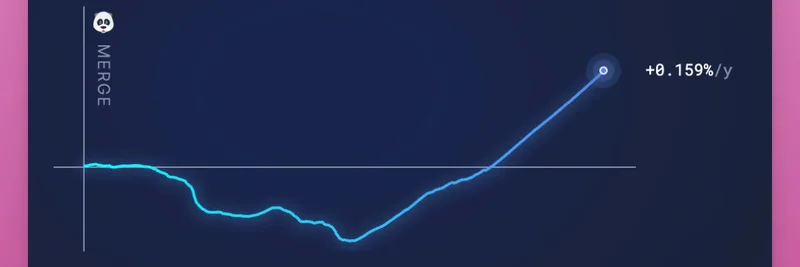In the ever-evolving world of cryptocurrency, Ethereum (ETH) continues to spark debates about its long-term role. A recent tweet from DeFi expert Ignas, known as @DefiIgnas on X, dives deep into why ETH's upside might be limited unless it solidifies its position as a store of value (SoV). For those new to the term, SoV refers to an asset that holds or increases its value over time, like gold or Bitcoin (BTC), making it appealing for long-term holding rather than just trading.
Ignas points out that to truly buy and hold ETH today, you need faith in its SoV potential. Sure, ETH could surge to $10,000 without major changes, driven by hype around tokenization and real-world assets (RWAs)—think digitizing stocks, bonds, or property on the blockchain. But he warns this narrative alone won't sustain massive growth. Why? Newer blockchains are already vying for RWA and stablecoin adoption with perks like better privacy, faster speeds, and lower fees. These alternatives might steal the spotlight, but they lack ETH's shot at true neutrality and decentralization.
What sets ETH apart, according to Ignas, is its existing use among DeFi enthusiasts who treat it as yield-bearing collateral—basically, locking it up to earn interest or borrow against it. To break into Bitcoin's territory and attract passive investors from institutions and retail alike, ETH needs to emphasize its strengths: native yield (rewards from staking) and smart contract utility for DeFi applications.
The Missing Piece: Deflationary Supply
The real game-changer? Deflationary supply. If Ethereum burns more ETH through transaction fees than it issues via staking rewards, the total supply decreases over time, potentially driving up value due to scarcity. This harks back to the "Ultrasound Money" narrative that hyped ETH post-Merge—the 2022 upgrade that shifted Ethereum from energy-intensive proof-of-work (PoW) to eco-friendly proof-of-stake (PoS). Under PoS, ETH issuance is lower, but recent data shows supply inching up slightly, as seen in charts from sites like Ultrasound Money.
Ignas argues that a deflationary ETH could outshine BTC, which faces future security risks as miner rewards halve and fee revenue remains shaky. Bitcoin's fixed 21 million supply cap is iconic, but ETH's dynamic burn mechanism could make it "superior" if adoption ramps up enough to torch more tokens.
Taxing L2s and Reviving Ultrasound Money
To get there, Ethereum might need to "tax" layer-2 (L2) solutions—scaling networks built on top of ETH that handle transactions cheaper and faster. These L2s, like Optimism or Arbitrum, batch ops and settle back to the main chain, but they don't burn as much ETH as direct mainnet use. Ignas suggests finding ways to capture more value from L2 growth, perhaps through upcoming upgrades like "Fuska" (likely a nod to future Ethereum improvements mentioned by Vitalik Buterin).
The Ultrasound Money story isn't gone; it's just sleeping. If you're stacking ETH now, you're betting on increased adoption—more DeFi, RWAs, and even meme tokens buzzing on Ethereum—that boosts burns and flips the supply script.
Broader Implications for Crypto Holders
Drawing from investor Ray Dalio's wisdom, Ignas reminds us that great money serves as both a medium of exchange and a store of wealth, with the latter being crucial. BTC nailed SoV early, but ETH's utility edge could flip the script if deflation kicks in.
For meme token fans, this matters too. Many top memes, from PEPE to DOGE-inspired spins, thrive on Ethereum or its L2s. A stronger, SoV-boosted ETH means a healthier ecosystem for launching and trading these viral assets. If ETH pumps on deflationary vibes, expect meme mania to follow.
In the end, Ignas's take is a call to action for Ethereum believers: Push for mechanisms that enhance burns and cement ETH's SoV status. Whether through community upgrades or organic growth, the path to outpacing BTC lies in scarcity plus utility. Keep an eye on Ethereum's supply metrics— they could signal the next big move in crypto.


